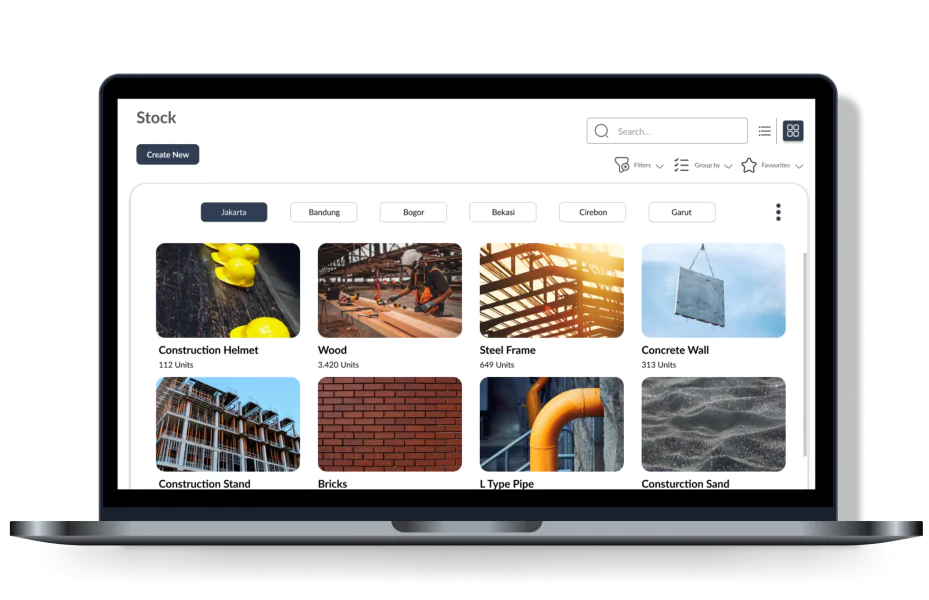I often see construction projects descend into chaos due to poor planning, with materials arriving late and equipment blocking vital pathways. This disorganization underscores the critical need for effective site logistics to manage resource flow.
This turmoil slows progress and inflates costs, but implementing advanced tools can resolve these issues. Using robust construction software allows us to coordinate every aspect seamlessly.
I have compiled this guide to help you understand the strategies needed for operational excellence. Tingnan ang sumusunod na paliwanag para matuto pa!
Table of Contents

Key Takeaways
|
What Is Site Logistics and Why Is It Crucial for Your Project?
Site logistics is the discipline of planning and controlling the flow of materials, equipment, and labor within a project site. It ensures that every resource moves efficiently from the gate to its final point of use.
Mastering this process is vital because it directly impacts project timelines, safety standards, and overall profitability. Without it, companies risk costly delays and accidents that could have been easily prevented.
Key Components of an Effective Site Logistics Plan
A successful plan relies on analyzing interconnected components during the pre-construction phase. This blueprint guides all ground activities to prevent bottlenecks and disruptions.
- Site analysis and layout
Site analysis determines the optimal placement of storage, offices, and access routes based on topography. It minimizes workers’ travel distances and prevents traffic conflicts from the start. - Material management and storage
Effective material management covers the lifecycle from reception and quality inspection to final distribution. This includes designating specific storage zones for weather-sensitive items versus bulk materials. - Traffic management
Traffic management designs clear routes for vehicles and heavy machinery to prevent congestion. It involves scheduling deliveries to avoid peak hours and placing clear signage for safety. - Waste management and sustainability
Waste management focuses on strategies to reduce, reuse, and recycle construction debris efficiently. This practice involves providing separate containers for different materials, like wood and metal. - Safety and security
Safety planning ensures evacuation routes remain clear and storage areas are stable. It also includes access control at gates and surveillance systems to secure valuable assets.
Common Challenges in Site Logistics and How to Overcome Them
Even with meticulous planning, dynamic conditions and external factors can disrupt operations on the ground. Anticipating these hurdles with mitigation strategies is key to keeping the project on track.
- Limited space and tight locations
Urban projects often face space constraints that hinder storage and equipment maneuvering. The solution lies in just-in-time scheduling, delivering materials only when needed. - Poor coordination among subcontractors and suppliers
A lack of communication among subcontractors can lead to schedule conflicts and disputes. Using a centralized platform enables all parties to view the master schedule in real time. - Delays in material delivery
Delivery delays often lead to project delays due to supplier issues or traffic. Real-time monitoring of orders helps identify potential delays early, enabling a faster response. - Risk of theft and asset damage
Construction materials are prime targets for theft and can be damaged by weather. Strict access control and proper storage protection are essential to safeguard these assets. - Weather changes and unexpected conditions
Adverse weather can halt work and damage exposed materials without warning. Contingency planning involves preparing backup storage and monitoring forecasts to adjust schedules.
The Role of Technology in Optimizing Site Logistics
Managing complex logistics manually is inefficient and error-prone in today’s digital age. Adopting specialized software automates tasks and connects stakeholders for better control.
- Data centralization with Construction Software
Construction software integrates schedules, budgets, and technical drawings into one platform. It ensures all teams work with the most up-to-date data available. - Procurement automation with a Procurement System
A procurement system automates the workflow from creating requests to approving purchase orders. This digital process speeds up the cycle and reduces administrative burdens. - Precision material tracking using an Inventory Management System
Inventory management systems use barcodes to track material movement in real-time. Automated alerts notify the team when stock levels are low to prevent shortages. - Asset and heavy equipment management through an Asset Management System
Asset management software tracks the location and maintenance status of heavy equipment. GPS features allow managers to monitor usage and schedule preventive maintenance.
KPIs You Must Monitor for Site Logistics
Establishing clear metrics is essential to evaluating performance and identifying inefficiencies. These indicators provide objective data to support data-driven decisions rather than intuition.
- Cost-related Key Performance Indicators (KPIs)
Cost metrics measure financial efficiency, such as the variance between budgeted and actual logistics costs. Monitoring material handling costs helps identify spending trends and waste. - Time-related Key Performance Indicators (KPIs)
Time-related KPIs track schedule adherence, including the supplier’s on-time delivery rate. Measuring material receiving cycle times helps identify workflow bottlenecks. - Quality and safety-related Key Performance Indicators (KPIs)
Quality metrics track the percentage of materials rejected upon receipt due to damage. Safety indicators monitor the number of logistics-related incidents to ensure a secure environment.
Optimize Your Business Management with Solutions from HashMicro
HashMicro provides an integrated system that automates complex construction processes. This HashMicro Construction Management Software enhances visibility across all operations.
- Budget S-Curve Management: This feature compares planned budget data against actual expenditure to visualize spending patterns.
- In-Depth Job Estimates (RAB): The system calculates detailed project cost estimates based on input data for planning.
- Real-Time Project Dashboard: Displays real-time project progress updates on a single visual interface.
- Integrated Procurement Management: This tool digitizes the material acquisition workflow from the initial request to the final order.
- Asset & Vehicle Maintenance Management: The software automates the scheduling of maintenance tasks for equipment based on usage data.
We invite you to experience how our solutions can streamline your business operations. Click here to try the free demo now.
Conclusion
Effective site logistics is a strategic pillar that determines the success of any construction project. It requires meticulous planning to coordinate components such as layout and waste management effectively.
Modern projects demand technology such as HashMicro Construction Management Software to optimize complex systems. This integration provides real-time data for smart, proactive decision-making.
Investing in these solutions ensures your projects meet the highest standards of excellence. Try our free demo today. Pahusayin ang iyong negosyo sa amin!

FAQ About Site Logistics
-
What is the first step in creating a site logistics plan?
The most fundamental first step is to conduct a thorough site analysis. This includes understanding the physical constraints of the area, identifying main access points, and mapping potential obstacles to create an initial site layout plan.
-
How can technology help improve safety in site logistics?
Technology enhances safety by ensuring equipment is well-maintained through asset management software, regulating vehicle movement with digital traffic systems, and disseminating safety alerts instantly through a centralized communication platform.
-
What is the main role of a logistics manager on a project site?
A logistics manager is responsible for planning, executing, and overseeing all on-site logistical activities. Their main role is to ensure the smooth flow of materials, equipment, and personnel in coordination with all project stakeholders.
-
What is the best way to efficiently manage construction waste on site?
The best way is to implement a 3R (Reduce, Reuse, Recycle) strategy from the start. This involves ordering materials accurately to reduce waste, reusing items like formwork, and segregating waste for recycling, which is both eco-friendly and cost-effective.
-
Do small-scale construction projects also need a site logistics plan?
Absolutely. Even on a smaller scale, principles of site logistics are highly relevant for managing limited space, ensuring timely material delivery, and handling waste. A simplified plan can significantly improve efficiency and professionalism.






































